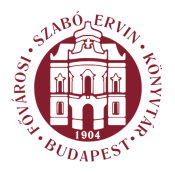Prakfalvi Endre: Roman Catholic Churches in Unified Budapest - Our Budapest (Budapest, 2003)
The Chapel of Christ the King, 19126
Thaddeus were sculpted by József Damkó. In a letter in the archives of the Hungarian Museum of Architecture, Hüti says that Damkó had also prepared a statue of St. Joseph Berchman, the patron saint of altar boys, but there is no trace of the item in the church. Imre Zsellér's stained-glass windows (one of which was donated by Hültl to the church in 1914) weathered World War II, despite the fact that Zugliget, the area where the church stands, was one of the points at which the Germans attempted to break out of the encircled capital. A marble plaque commemorates the role played by the church in recent history as an asylum at the dawn of the 1989-90 political changes. The text reads: It was from here ... the spiritual centre of the Maltese Charitable Service of Hungary, THAT BROTHERLY LOVE SET FORTH ... IN 1989, TO PROTECT HUNGARIANS LIVING ACROSS THE BORDERS AND OTHER PEOPLES. By THE GRACE OF GOD AND WITH THE HELP OF MORAL SUPPORT AND GENEROUS DONATIONS FROM THE CITIZENS OF THIS COUNTRY AND THE WORLD, BETWEEN 14 August and 14 November 1989, on their way to the free parts of Germany, German NATIONALS ESCAPING FROM THE TYRANNY OF A FAILED DOCTRINE FOUND SHELTER HERE IN THE CHURCH AND THE CAMP. With the opening of the Iron Curtain [between Austria and Hungary—the translator] the first brick was stricken out of the Berlin wall. In memory of that, 1992 Germany presented the church with an organ. The Chapel of Christ the King, 1926 No. 39 Keleti Károly utca, District II "Christ, our Lord and great king /1...1 / Return the crown / The laurel of the Carpathians to us!" (Harmath and Sík, Jou Are Holy, Our Lord! A Collection 0(1 Folk Chants, 283.) A chapel to commemorate the "staunch patriot and faithful Catholic", Ferenc Rákóczi 11, the princely commander of the 1703-11 War of Independence against Hapsburg rule, was envisaged to be included in the complex of buildings belonging to the Archdiocese Secondary School and Convent in Ferenc Schmers designs made around 1906. (The mortal remains of the exiled prince were repatriated in 1906 from the town of Rodosto in Turkey, and were laid to rest in the St. Elizabeth Cathedral of Kassa.) However, the insufficient size of the construction site in Keleti Károly utca and the conditions prevailing during World War 1 rendered the original plans unrealisable. The chapel construction committee resumed 37
